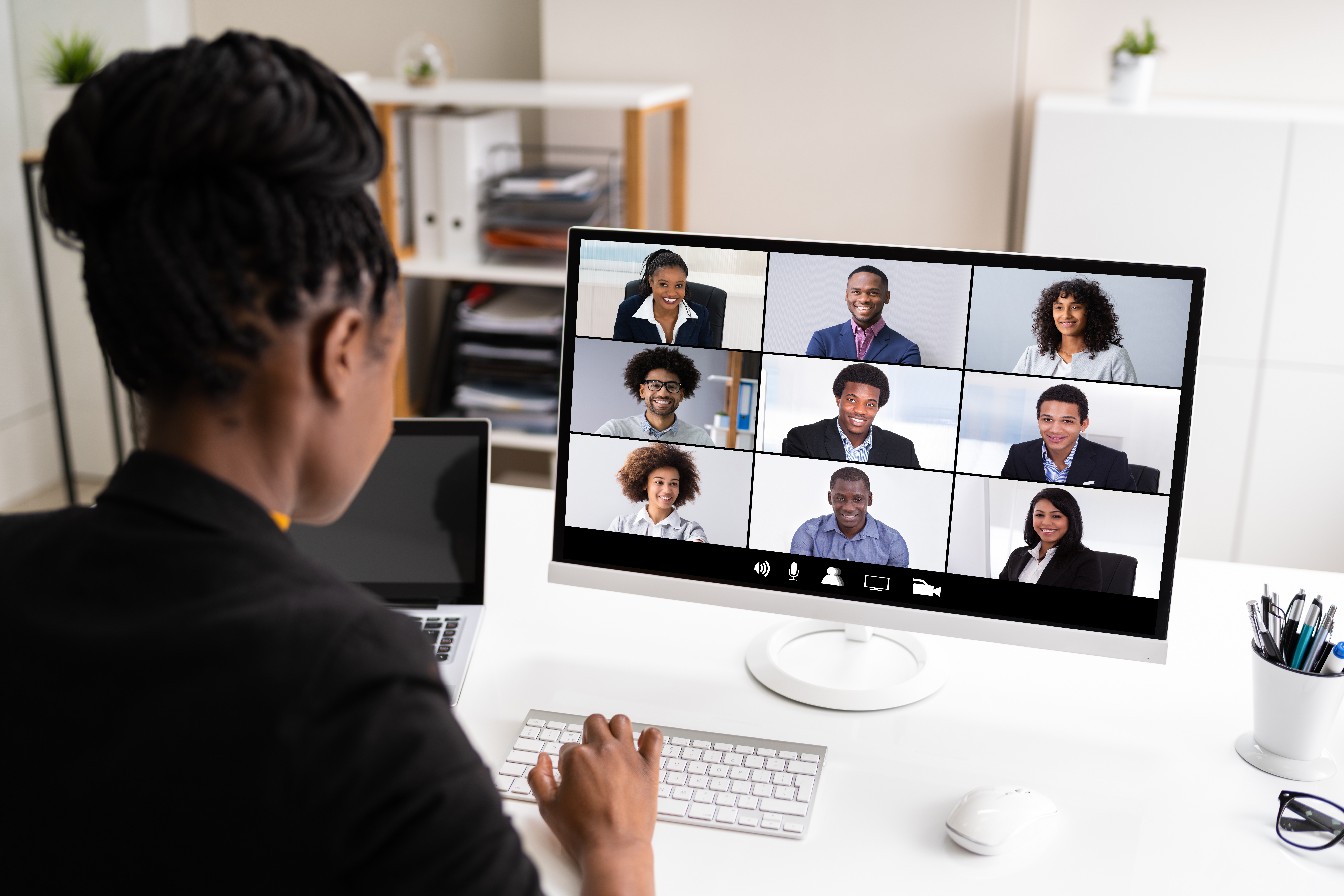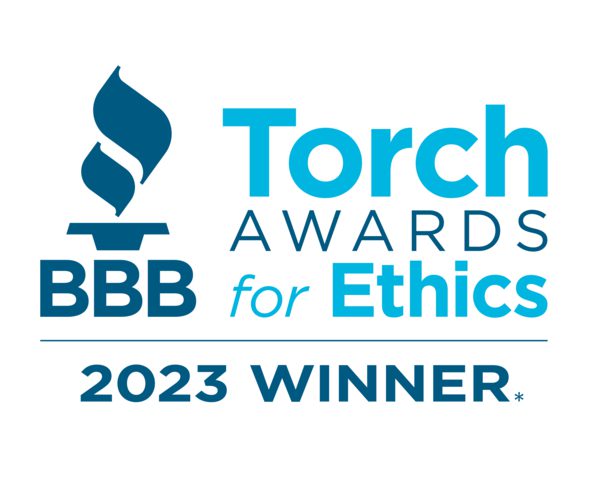Access Network Blog: How to Run Accessible Virtual Meetings?
Hello everyone, and thank you for continuing to be an important part of the Access Network. The overall theme for our 2024 newsletters is “Accessible Spaces” and this Quarter Two publication is going to focus on one of the most important digital spaces in today’s world: “Virtual Meetings.” Most people became all too familiar with these virtual calls during the first years of the pandemic, but there are many benefits to meeting virtually, especially for people with a variety of disabilities. These days, most of the major virtual call software (Zoom and Teams being the two this newsletter focuses on) have accessibility features already built in, so these meetings are relatively simple to open up for any participant. This will serve as a guide for some of the major considerations and tips for making your virtual meetings accessible for any employee or consumer.
Why is this important to my business?
Most virtual meetings we attend tend to be professional settings; meetings with coworkers, clients, or addressing comments from the public. Meetings like this are then an important part working with individuals with disabilities as fellow employees, meaning that these meetings must be accessible under Title I of the Americans with Disabilities Act (ADA). Title I states that employees (or potential employees) cannot be discriminated against due to their disability. The relevant part to this discussion is that virtual meetings, if they’re part of the job duties for employees, must be equally accessible to all employees and can’t discriminate against someone who may need accommodation.
If your organization is open to the public or if you are a government entity, then Title II and Title III of the ADA also require accessible virtual meetings. As a business that services the public, or a “public accommodation” as the ADA words it, Title III means that your services need to be made accessible to people with disabilities, so your virtual meeting must be accessible for all of your consumers. Title II requires the same for governmental entities. “Effective Communication” is a required element of the ADA as well, which means that any forms of communication (printed or digital documents, advertising, and virtual meetings) must be equally effective for people with and without disabilities. In the end, while there are several reasons why you HAVE to, the simple fact is that you should be making meetings accessible because it’s the right thing to do.
Prepare Early, Thank Yourself Later
It’s much easier to make a virtual meeting accessible if you start planning early. Many of the pieces of information here are going to come down to your understanding of the platform you’re using and knowing its settings. Zoom and Microsoft Teams are two of the most popular virtual call software and both are very easy to make accessible. You need to know what settings to enable and what steps to follow, however, and that requires a little practice and some early prep. As soon as you can find out if a meeting will include someone with a disability, plan specific accommodations for them. Having a registration form where someone can request accommodation does this step for you, saving you guessing work and making participants feel comforted that you’re taking steps to make your meeting accessible to them.
- Test your platform ahead of time, or talk to the site’s representative on accessibility
- Find out ahead of time what guests will be attending and what accommodation they need
- Ensure that advertising and registration is accessible as well
- Distributing materials before a meeting is the best practice when possible
The Meeting Itself
In general, be flexible, especially during planning and in the opening minutes of a meeting. There will be little things to fix, slight hiccups, and some user error as you use new settings. Just be patient and work through these issues. This is a reason why starting a meeting early to do a tech test can be so important. Zoom and Teams both feature several great accessibility features that we strongly recommend, such as automated captioning and the ability to record the meeting. CART, or Communication Access Realtime Translation, is another great service to offer, in which an expert will provide live captions as a transcript while conversation occurs. While there will be a fee for payment, these captions will be fast and much more accurate than anything auto-generated, so consider if budget or accuracy is more important for this meeting. On top of these options, it can be a good idea to have someone designated as the enforcer of accessibility for the meeting, ensuring that participants with disabilities are not having any issues while also enforcing rules for the other participants. Finally, you should always try to send out both a recording of the call and a transcript, both are just more ways of making sure that no one missed anything.
- Start the call early to double check that everything works as intended
- Speakers should keep their video on for those who need to lip-read
- Limit background visuals and noise to not distract or overwhelm participants
- At the start of a call, each participant should verbally describe their appearance, identity, and surroundings
- Instruct those who speak during the conversation to say their name first for the benefit of those with low vision and to help make a transcription later
- Make sure to enable auto-captioning
- CART, or Communication Access Realtime Translation, is one of the best ways of having live captions that are the most accurate to what was actually said by a speaker
- Screen reader software, used by people with low vision, will automatically read any messages in the chat or reactions used by participants. These will interrupt the speaker for those users, so try to discourage unnecessary messages in the chat
- Screen readers cannot interact with anything shared with “Share Screen” feature, including if you share a document with text. If you must use Share Screen, make sure you verbally explain what is being shown because low-vision participants will not be able to interact with it at all
- If you show a video, make sure that it has captions turned on and enabled
- Make sure that any American Sign Language interpreters have their video visible at all times, either superimposed onto the main speaker’s video feed or pinned for participants
- When sending out a recording of the meeting afterwards, make sure the ASL interpreter is pinned and visible throughout the entire video
Accessible Documents
A final element to consider is the documents being shared. As accessible as you may make the actual meeting itself, the information that you share before and after must be equally open to all participants. Remember that sending any documents out to participants before the meeting is highly encouraged. Just make sure they can be opened and accessed by everyone. There are a variety of ways to ensure a document is accessible (several of which are listed in the resources below), but there are a few guidelines to consider:
- PDFs and .doc files can both be made to be accessible, but TXT files are considered one of the most accessible file formats
- Some individuals with disabilities will need documents in an electronic format to access them, and some will need paper. When in doubt, ask what people need
- For electronic documents, stay away from files that appear as an image on the page. Screen readers cannot read them
- For low-vision readers, having larger and bold text or having high contrast between font and background colors make files easier to read
- Don’t trust the built-in accessibility checker on Adobe or Microsoft Office. If you want a file to be accessible, a human expert needs to review it
- The simpler and plainer language is used, the more people will understand the content
- Guides for creating accessible PowerPoint presentations can be found here
- Guides for accessible documents can be found here and here
While running an accessible virtual meeting can feel intimidating if you’ve never done it, know that the two most common software platforms (Zoom and Microsoft Teams) are both packed with built-in features that make them accessible for many users, and there are many internet guides on how to use those features. As long as you plan out what accommodations are needed before the meeting, you should have no issues making sure everyone can participate. Some accommodations should be made regardless of if there is a request or not, such as enabling closed captions, sending out accessible documents before and after the meeting, and recording the video/transcript to send out afterwards. Beyond this, again, think of the individual. Make sure that changes and accommodations are specific to the requests of the specific people attending the meeting.
Resources
Web Accessibility Initiative Checklist for Making Events Accessible:
World Wide Web Consortium’s Guide to the Accessibility of Remote Meetings:
Section 508 Guide to Creating Accessible Meetings:
Breaking Silences’ Guide to Hosting Accessible Virtual Meetings:


